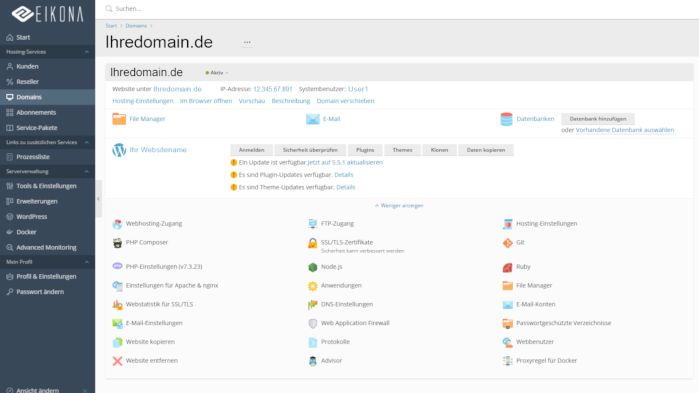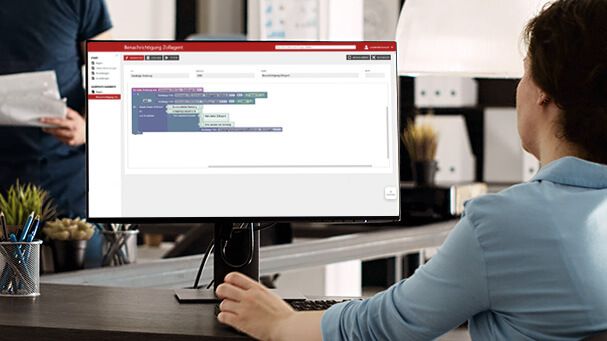Every web server on the Internet has a so-called IP address and is identified by this unique numeric code. It enables an internet browser to address specific systems in order to retrieve the contents of a website. Human internet users do not usually get to see these numerical sequences. And for good reason: IP addresses such as 62.146.73.15 are difficult to remember and are prone to typing errors. Therefore, an alphanumeric method of addressing has become established for calling up websites: the domain.
A domain is a globally unique, unambiguous name for a logically delimited section of the internet. A domain is the address people use to visit a website. It is what comes after the '@' in an email address or after the // in a web address.
For example, if the full web address (URL: Uniform Resource Locator) is https://www.example.de/impressum, then the domain in this case is 'example.de'. As you can see, domains and URLs are related, but they are not the same thing. If you were to compare it to a house, the domain name would be the address with street and house number, while the URL would be the entire route to the house, including the specific room within the house.
Anyone who wants to be represented on the Internet by a website must first set up a domain. It is the Internet address under which the website will be accessible in the future.
Regardless of whether it is a company, a public or a private person, anyone who wants to be present on the Internet can do so through a website. In order to publish this on the Internet, it is necessary to set up a domain with an official registrar.
As already mentioned, domains can be purchased and obtained from registrars. A desired domain can be registered as long as it is not currently taken. This ensures that someone entering your web address will be directed to your homepage and not someone else's. Domains are registered and renewed annually, which means that they cannot be allocated immediately forever. To protect your registration, providers often apply an automatic renewal for your domain. There are usually several ways to register your domain:
- through a direct contractual relationship with the operator of a (top level) domain (often expensive and not easy, sometimes only possible as a bulk buyer)
- with a registrar for the desired parent domain
- via a service provider working together with a registrar
- via a reseller or trader working with a service provider or registrar
An internet user types the domain www.example.de.de into the search mask of his web browser and this sends a request to the responsible name server. These specialised web or name servers take over the translation of domains to IP addresses - also called name resolution. This service works in a similar way to directory enquiries: there, the entry for www.example.de is retrieved from the database and the stored IP address is transmitted to the browser.
Now, to explain the interaction between a domain and a web space, let's go back to our comparison with the house: If the domain is the address, then web hosting is the plot of land on which you ultimately build your house or website. Web hosting usually includes several functions, such as web space for running your website and the possibility to host emails on your domain.
The complete name of a domain is called a Fully Qualified Domain Name (FQDN). An FQDN indicates the exact position of a target computer in the tree hierarchy of the Domain Name System and consists of two parts: the host name and the domain name. The following example shows the FQDN of a mail server:
mail.example.de.
While mail represents the host name, example.de indicates the domain under which the specific computer can be found. As a host name for servers that are responsible for operating websites, the characteristic www is usually used; such domains are also called subdomains:
www.example.de.
It should be noted that the Fully Qualified Domain Name, unlike internet addresses in everyday use, always ends with a dot. This is due to the hierarchical structure of the Domain Name System, according to which domains are always broken down starting from the highest level, the so-called root label. The root label of an FQDN is defined as empty and does not usually appear in user applications on the Internet. Entries on name servers, so-called resource records, on the other hand, must always be present as a complete FQDN with a final dot after the top-level domain:
www.example.de.
A few examples of a top-level domain: .com, .de, .org, .net, .cz, .io, .tv, .info, .uk



